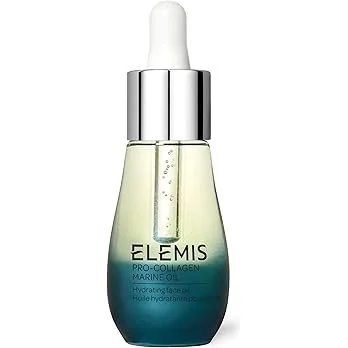"Mending the Shield: How to Repair a Damaged Skin Barrier in Aging Skin"
Your skin barrier: the unsung hero of your beauty routine. It’s the loyal bodyguard keeping the good stuff in (moisture) and the bad stuff out (pollution, bacteria, and that one ex who still texts “u up?”). But as we age, this hero gets a little tired. Years of sun exposure, over-exfoliation, and the general chaos of life can leave it cracked, dry, and in desperate need of some TLC.
But don’t worry—it’s never too late to repair and rebuild. Let’s dive into what your skin barrier actually is, why it might be acting up, and how to restore it to its full glory. Bonus? We’ll sprinkle in some clean beauty tips and product recommendations to make the process as pure as your intentions (most of the time).
What Is Your Skin Barrier, Anyway?
Your skin barrier (also known as the stratum corneum, for the science buffs out there) is the outermost layer of your skin. Think of it as a brick wall:
Bricks: These are your skin cells, sturdy and reliable.
Mortar: This is made up of lipids (like ceramides, fatty acids, and cholesterol) that hold everything together.
When your barrier is intact, it keeps moisture in and prevents irritants from sneaking through. But when it’s damaged, it’s like a crumbling wall—moisture escapes, irritants invade, and suddenly you’re dealing with dryness, redness, and sensitivity that feels like your skin’s version of a midlife crisis.
Why Does the Skin Barrier Get Damaged?
Blame it on a combination of aging and, well, life:
Aging Skin:
As you age, your skin produces fewer lipids, making the “mortar” of your barrier weaker. This leads to dryness and an increased likelihood of irritation.Over-Exfoliation:
Scrubbing your face like it’s a dirty frying pan can strip away those essential lipids.Harsh Products:
That tingling sensation from your favorite cleanser? It might be more harm than good, especially if it’s loaded with alcohol or sulfates.Environmental Stressors:
Pollution, UV rays, and extreme weather conditions can all take a toll.Stress and Diet:
Stress hormones and a diet lacking in essential fatty acids can weaken your skin’s defenses. (Yes, eating chips instead of salmon has consequences, sadly.)
How to Repair Your Skin Barrier: The Essentials
If your skin barrier is crying for help, here’s how to give it the care it needs:
1. Strip Back Your Routine
Think of this as a skincare detox. For now, put the exfoliating acids, retinoids, and scrubs on the bench. Less is more when your barrier needs time to heal.
2. Choose Barrier-Friendly Ingredients
Look for these MVPs to rebuild your skin’s fortress:
Ceramides: Essential for restoring the “mortar” of your skin.
Hyaluronic Acid: A hydration powerhouse that plumps and soothes.
Squalane: Mimics your skin’s natural oils for lightweight hydration.
Niacinamide: Reduces redness and strengthens the barrier.
Oat Extract: Calms irritation like a warm hug for your face.
3. Keep It Clean (Beauty)
Your skin is already sensitive, so avoid potential irritants like synthetic fragrances, parabens, and harsh chemicals. Clean beauty products are your best friend here.
The Ultimate Skin Barrier Repair Routine
Here’s your step-by-step guide to mending your barrier while keeping things clean and simple:
Morning Routine
Gentle Cleanser:
Try KraveBeauty Matcha Hemp Hydrating Cleanser. It cleans without stripping and feels like a spa in a tube.
Hydrating Toner:
Use Indie Lee CoQ-10 Toner. Packed with antioxidants, it soothes and preps your skin for the day.
Barrier-Repairing Serum:
Opt for The Ordinary Hyaluronic Acid 2% + B5. Affordable, effective, and hydrating.
Moisturizer:
Go for Drunk Elephant Lala Retro Whipped Cream. It’s ceramide-rich and deeply nourishing.
Sunscreen:
Always! Use Supergoop! Zincscreen. A mineral SPF that protects without irritating.
Evening Routine
Double Cleanse (If Wearing Makeup):
Start with Farmacy Green Clean Cleansing Balm. Gentle and effective.
Follow with your morning cleanser.
Hydrating Mist:
Use Tower 28 SOS Daily Rescue Facial Spray. It’s like a calming serum in spray form.
Treatment:
Apply Biossance Squalane + Omega Repair Cream. It’s rich in squalane and fatty acids for barrier repair.
Overnight Mask:
Once a week, treat yourself to First Aid Beauty Ultra Repair Cream. It’s deeply soothing and perfect for overnight recovery.
Clean Beauty Tips for Barrier Repair
Simplify First: Stick to 3-5 core products until your skin barrier heals.
Patch Test Everything: Even clean beauty products can irritate sensitive skin if you’re allergic to an ingredient.
Avoid Essential Oils: While natural, they can be too strong for damaged skin.
Look for Minimalist Formulas: Fewer ingredients = less chance of irritation.
Dietary Boosts for a Stronger Barrier
Great skin starts from the inside out. Include these foods for optimal skin health:
Fatty Fish: Salmon, mackerel, and sardines are rich in omega-3s, which help maintain your skin’s lipid barrier.
Nuts and Seeds: Almonds, walnuts, and flaxseeds are loaded with healthy fats and vitamin E.
Leafy Greens: Spinach and kale provide antioxidants to fight inflammation.
Avocados: A delicious source of healthy fats that hydrate from the inside.
Water: Okay, not a food, but staying hydrated is key to skin health.
Final Thoughts: Rebuilding with Love (and Patience)
Repairing a damaged skin barrier isn’t a sprint; it’s a marathon with plenty of self-care pit stops along the way. The key is consistency, gentleness, and a sense of humor when your skin decides to freak out.
Remember: aging skin isn’t “damaged” or “less than.” It’s evolving, just like you. Treat it with respect, feed it the good stuff, and watch it bounce back stronger, smoother, and more radiant than ever. Because a healthy skin barrier is your best accessory—no filter required.
Purchases made from this site may result in a commission.

